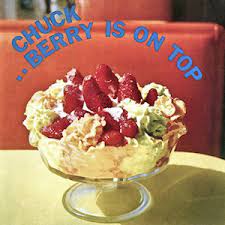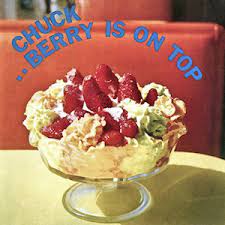Pricing: $3.25ea OR any 10 for $10
(use code "Any10410" at checkout)
Paid Requests for $25ea
(comes with any 8 freebies -> so 9 for $25)
100's Of Free Demos & Chord Sheets
Popular Music In The 50s
On The Acoustic
On this popular music in the 50s page are some very popular artists whose music is fun to learn on guitar.

Jump menu to quickly access the sections.
Popular Music In The 50s
Chords, Demos, Lyrics, Tutorials
1. Everybody's Tryin' To Be My Baby - Carl Perkins

Everybody's Tryin' To Be My Baby was written in 1936 by Rex Griffin but often given credit to Carl Perkins who recorded the song in 1957 and covered by The Beatles in 1964.
To my knowledge the song was released as a single in 1957 but I'm not sure if it charted. The track is from the album "Dance Album Of Carl Perkins".
This one I play in standard tuning using the rhythm pattern root down root up down up and repeat. No lead work here, just a few riffs while playing thew chords E, A and B7.
Jump To Top
2. Gee - The Crows

Gee was the only hit from this group who formed in 1951 and released this song in 1953. Many considered this song to be the first rock and roll song.
The song reached #14 on the Pop charts and #2 on the R&B charts.
The chords needed here are D, Bm, Em, A7, G, D7 and Ab while you play a little picking into the rhythm of down up down up down up. This one is played in standard tuning.
Jump To Top
3. Johnny B Goode - Chuck Berry

Johnny B Goode was written in 1955 but not recorded and released until 1958. Chuck Berry said later on the song was a reflection of his early days and changed the lyrics country boy from colored boy to ensure the song received radio play. The opening riff was lifted from a song from 1946 entitled "Ain't That Just Like A Woman".
The song has become one of the most recognized and influential rock and roll songs of all time.
The song tells the story of a young, talented guitar player named Johnny B. Goode who comes from humble beginnings but dreams of making it big in the music industry. The lyrics describe Johnny's journey to fame and fortune, as well as his incredible guitar skills, which are showcased in the song's iconic guitar riff.
"Johnny B. Goode" has been covered by many artists over the years and has been featured in numerous films, TV shows, and commercials. It has also been included on several "greatest songs of all time" lists, including Rolling Stone magazine's list of the 500 Greatest Songs of All Time, where it ranked at number 7.
Standard tuning works here while playing the A, D and E7 chords using the down up down up and repeat rhythm pattern or play all down-strokes. Yes there is lead work in this number.
Jump To Top Of Popular Music In The 50s
4. Just Dropped In - Jerry Lee Lewis

Just Dropped In was considered a psychedelic rock song written Mickey Newbury. Jerry Lee Lewis first recorded the song in May of 1967. But it was Kenny Rogers and The First Edition who released their version later that year and scored a #5 hit.
I don't believe Jerry Lee Lewis released his version as a single but it can be found on the album "Soul My Way".
The rhythm here is a steady root down root up down up using the chords Dm, A7, G and a Gm. There is a little picking for the acoustic player in this tune played in standard tuning.
Jump To Top Of Popular Music In The 50s
5. Roll Over Beethoven - Chuck Berry

Roll Over Beethoven is a rock and roll song written by Chuck Berry, which was released in 1956. The song became a hit, reaching number 29 on the Billboard Hot 100 chart and helping to establish Berry as a major force in the emerging rock and roll genre.
The song's lyrics describe a desire to leave classical music behind in favor of rock and roll, with Berry urging the titular composer, Ludwig van Beethoven, to "roll over" in his grave and make way for the new music. The song features Berry's signature guitar style and a driving rhythm section, which helped to establish it as an early rock and roll classic.
"Roll Over Beethoven" has since become a staple of rock and roll music, and has been covered by many artists over the years, including The Beatles and Electric Light Orchestra.
The original key is a fret higher than pitch using the chords D, A and G. There is lead work in this one while playing either the down up down up rhythm pattern or playing steady down-strokes.
Jump To Top Of Popular Music In The 50s
6. Sweet Little Sixteen - Chuck Berry

Sweet Little 16 was recorded and released in Jan of 1958 and managed a #2 on the Billboard chart. Berry surpassed this with a number one eventually, but not until 1972 with My -Ding-A-Ling. The song became a massive hit, reaching number two on the Billboard Hot 100 chart and helping to solidify Berry's status as one of the biggest stars in rock and roll music.
The
lyrics of "Sweet Little Sixteen" describe a young girl who loves rock
and roll music and attends concerts and dances to see her favorite
bands.
"Sweet Little Sixteen" has been covered by numerous artists over the years, including The Beatles and The Beach Boys. The song has also been referenced in popular culture, appearing in films, television shows, and commercials.
Despite its enduring popularity, "Sweet Little Sixteen" has also been the subject of controversy due to accusations of plagiarism. In 1959, the song's melody was the subject of a lawsuit by the publishers of a song called "Sweet Little Sixteen" by a group called The Crests. The case was settled out of court, and Berry was required to give the publishers partial songwriting credit and royalties.
Three chords in this one which are A, D and G with Drop D Tuning and a down up down up down up rhythm pattern with some chops. No lead work in this one.
Jump To Top Of Popular Music In The 50s
7. The Promised Land - Chuck Berry

Promised Land a.k.a The Promised Land follows the melody of an old American folk song called The Wabash Cannonball. He had just gotten released from prison when this song was released in Dec 1964 and reached #41 on Billboard a month later. In fact, Berry used a prison atlas to chart the travels listed in the song.
The song tells the story of a man who is traveling from Norfolk, Virginia to the "promised land" of Los Angeles, California. The lyrics describe the man's journey, his encounters with various people and places along the way, and his excitement at finally reaching his destination.
"Promised Land" features Berry's signature guitar style and a driving rhythm section, which help to convey the excitement and energy of the song's narrative. The song also showcases Berry's ability to craft vivid and memorable lyrics that capture the spirit of the American experience.
The song was a hit for Berry, reaching number 41 on the Billboard Hot 100 chart. The song has since become a favorite of rock and roll fans, and has been covered by many artists over the years, including Elvis Presley and The Grateful Dead.
Fro rhythm play a down up down up and repeat, or use all down-strokes playing the chords C, F and G. Standard tuning with a bit of lead in this number.
Jump To Top Of Popular Music In The 50s
8. To Know Him Is To Love Him - The Teddy Bears

To Know Him Is to Love Him is a famous song by The Teddy Bears, written by Phil Spector. Spector got the idea from the words on his father's tombstone. The song was a big hit in 1958, reaching number one on the Billboard Hot 100 chart and number two on the UK's New Musical Express chart.
Even though The Teddy Bears didn't have a whole album with this song, it's still remembered as one of the greats of early rock and roll. Other artists like Peter & Gordon, Bobby Vinton, and Dolly Parton, Linda Ronstadt, and Emmylou Harris also had hits with it later on.
This one is full of chords which are D, G, A, A7, Bm, Bm/A, F, C, A#, D7, Dm, Gm and an E7. For rhythm you'll play a down down up down down down down and repeat. No lead break in the original version but I added one so it's optional.
Chords & Lyrics
Jump To Top Of Popular Music In The 50s
9. Whole Lotta Shakin - Jerry Lee Lewis

Whole Lotta Shakin was first recorded by Big Maybelle in 1955, but the 1957 version by Jerry Lee Lewis is the one most people know best because he radically changed the vibe.
He said he'd knew it would be a hit when he cut the song at Sun Studios in Feb 1957. It hit #3 on Billboard and #1 on the R&B Charts.
This track can be found on the "Original Hits Vol 1" album from 1969.
You can play this one in standard tuning using a down up down up down up down up and repeat rhythm pattern with the chords C, F, G, G7 and a C7. A bit of lead in this lesson.
Jump To Top Of Popular Music In The 50s
10. You Never Can Tell - Chuck Berry

You Never Can Tell was released in 1964 on his album "St. Louis to Liverpool". The song is known for its upbeat rhythm, catchy melody, and clever lyrics, which tell the story of a young couple who get married and start a new life together.
"You Never Can Tell" was a hit for Berry, reaching number 14 on the Billboard Hot 100 chart. The song has since become one of his most beloved and enduring classics, and has been covered by many artists over the years, including Emmylou Harris, Bruce Springsteen, and Bob Seger.
Drop D tuning is used in this song with just two chords, D and a G. The rhythm pattern hers is a steady down up down up and you'll pick a bit of lead in this one.
Jump To Top Of Popular Music In The 50s
Thanks for dropping by my popular music in the 50s page and I hope you found some of the info here useful.
If you liked this 50s page you might also like ... (click images)
Top Hits Of The 50s


